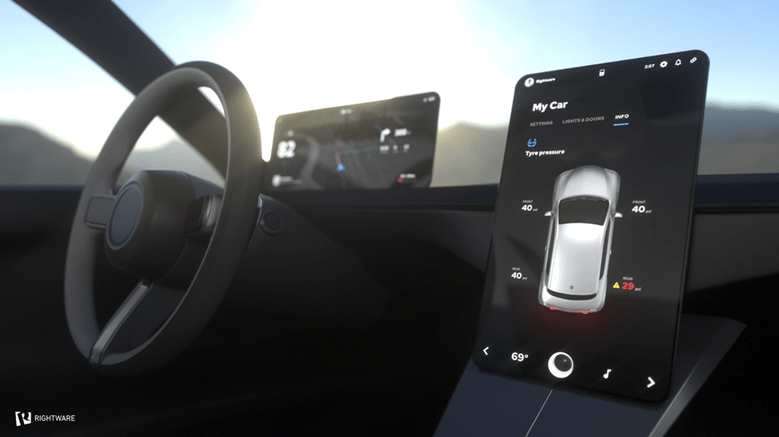Vehicle dashboards have evolved from mechanical displays of dials and switches into responsive digital interfaces which think and adapt while communicating with drivers. The shift has transformed driver interaction with their vehicles while creating a new definition for the entire in-car experience.
The digital dashboard era brings together information delivery with intuitive design right behind your steering wheel.
From Static to Smart
Old dashboards were static instruments—reliable, but limited. The dashboard displays your current speed and fuel level and possibly the oil temperature. Nothing more, nothing less.
Unlike stationary dashboards of the past the digital dashboard provides dynamic functionality. It doesn’t just show data—it adapts. Performance metrics become the main focus when you drive at high speeds. In the city? When driving in urban settings navigation and safety indicators become the primary dashboard features. On a long trip? Comfort settings and route information shine through.
This isn’t just an upgrade. The concept of the digital dashboard represents a complete overhaul of traditional dashboard functionalities.
A Personalized Command Center
The capability to customize digital dashboards stands out as their most remarkable attribute.
Driver profiles allow individuals to save their preferred display settings and driving modes so they can be activated instantly. The digital dashboard offers minimalist visuals for quiet commuting or detailed metrics for spirited driving depending on your preferences.
This isn’t about bells and whistles. Digital dashboard technology aims to center the driver while ensuring each journey feels both familiar and efficient as well as personalized.
Clarity Over Clutter
Good design is invisible. Optimal digital dashboards avoid flashy animations and unnecessary features to prevent user overwhelm. The information is displayed through organized layers that deliver relevant content in a timely manner with clean design.
The navigation feature remains prominently displayed whenever you need it. The system delivers weather alerts in a smooth manner that avoids alarming users. Without urgent notifications the display shifts into a peaceful ambient mode.
This focus on clarity improves safety. Drivers can focus their attention without being required to process multiple data streams simultaneously. Drivers receive exactly the information they require at the precise moments they need it.
A New Kind of Communication
The digital dashboard functions as both a display and the primary communication tool between the car and its driver.
The vehicle communicates its status by using visuals along with haptic feedback and colors that include subtle animations. The vehicle could recommend stopping for a break when it identifies signs of driver fatigue. The dashboard interface adapts its configuration during extreme weather conditions to highlight traction control functions. The vehicle directs your attention through directional cues when lane-keeping assistance becomes active.
The interface communicates without verbal language using an instinctive attention-based language fluency.
Merging Form and Function
Digital dashboards aren’t just functional—they’re beautifully crafted.
Each graphical element and interface arrangement follows a deliberate design philosophy. Dashboard systems use curved OLED screens or integrate into steering clusters while drawing from user experience design principles combined with motion graphics and ergonomic psychology.
The combination of technology and design ensures that the dashboard feels natural to operate. The dashboard operates with seamless quiet confidence that matches the experience of driving.
Driving Without the Noise
Digital dashboards provide the underappreciated advantage of mental clarity.
The multitude of gauges and blinking indicators on traditional dashboards generated constant low-level stress for drivers. Although everything operated smoothly there was always a constant stream of informational noise present.
Digital dashboards cut that clutter. They adopt minimalism to create mental space rather than follow current design trends. A cleaner display leads to clearer thinking. And clearer thinking leads to safer driving.
The Future on Display
The role of the dashboard will change as autonomous vehicles become more prevalent. The dashboard will instruct drivers when to take control of the vehicle and when they can relax during semi-autonomous operation. It will display more environmental awareness: showing what the car “sees” and “anticipates.”
Dashboards could merge with augmented reality to project navigation and hazard information onto the windshield which will remove the necessity of looking down.
The dashboard of future vehicles will function as more than a simple screen. The dashboard will function as an intelligent assistant, navigation partner, and overall experience designer in one package.
Final Thoughts
The digital dashboard functions as more than an aesthetic enhancement for modern vehicles. Modern vehicle dashboards serve as the brain to process information while also functioning as the face that shows visual data and the voice that communicates alerts. The digital dashboard adjusts to individual drivers while reducing complexity and infusing the driving experience with advanced intelligence.

